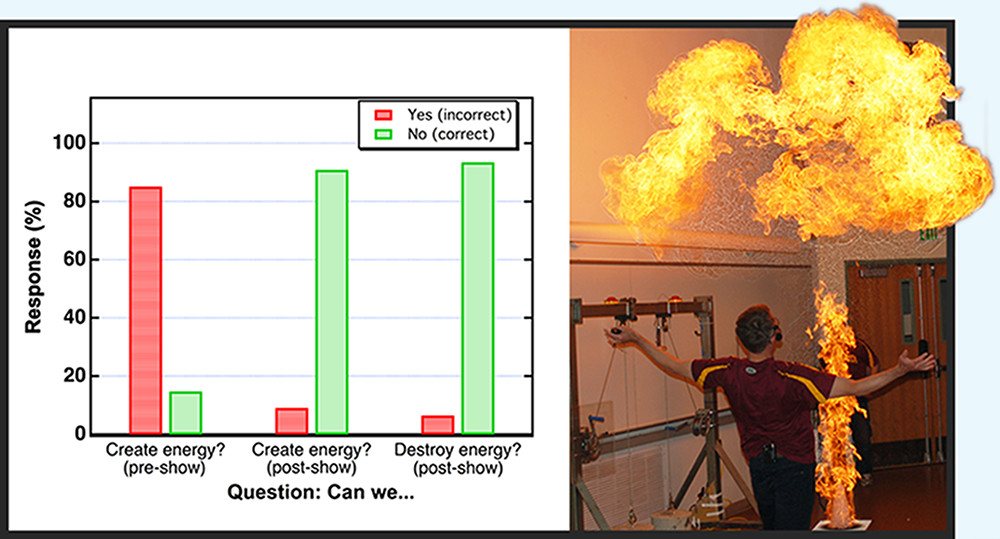Citation
DeWilde, J.F.; Rangnekar, E.P.; Ting, J.M.; Franek J.E.; Bates, F. S.; Hillmyer, M.A.; Blank, D.A. ACS Omega, 2019, 4, 2, 2661–2668.
Abstract
A biannual chemistry demonstration-based show named “Energy and U” was created to extend the general outreach themes of science, technology, engineering, and mathematics (STEM) fields and a college education with a specific goal: to teach the first law of thermodynamics to elementary school students. The effectiveness of the program was analyzed using a clicker survey system for over 12 000 visiting students. The fraction of the students that correctly answered the question “Is it possible to create energy?” increased from 14% immediately before the show to 89% immediately after the show. Students who had seen the show at least 5 months prior were twice as likely to correctly answer at the beginning of the show, demonstrating longer-term lesson retention. Interestingly, similar trends were observed for the adult chaperones that accompanied the students and participated in the clicker survey. A statistically significant difference (>99% confidence interval) was noted between the students’ responses to the questions “Can you create energy?” and “Can you destroy energy?”, revealing a potential effect of word choice on the interpretation of the first law of thermodynamics despite the two questions representing complementary concepts. Student performance, measured interest in science, and desire to attend college were not correlated with standard economic indicators. This measurement is consistent with the postulate that economic biases surrounding interest in STEM fields are less pronounced in elementary school than later in high school.
Publication URL
Image

Publication Title
"Evaluating Large-Scale STEM Outreach Efficacy with a Consistent Theme: Thermodynamics for Elementary School Students"
Publication Date